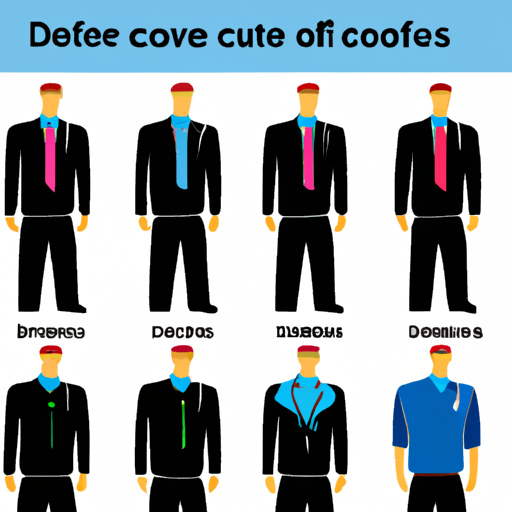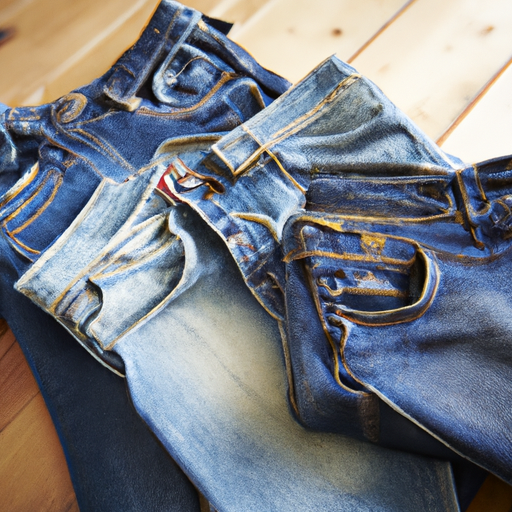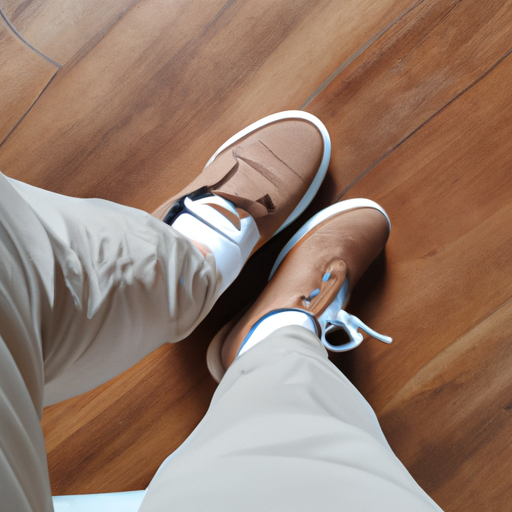-
Table of Contents
- Introduction
- Exploring the Different Types of Dress Codes: What Are the 5 Most Common?
- How to Dress for Each of the 5 Dress Codes: Tips and Tricks for Looking Your Best
- The Pros and Cons of Each of the 5 Dress Codes: What Are the Benefits and Drawbacks?
- How to Choose the Right Dress Code for Your Event: What to Consider When Making Your Decision
- The History of Dress Codes: How Have They Evolved Over Time?
- The Impact of Dress Codes on Society: How Do They Shape Our Culture?
- The Future of Dress Codes: What Changes Can We Expect to See in the Coming Years?
- Q&A
- Conclusion
Introduction
Dress codes are an important part of any social or professional setting. They help to create a sense of order and respect, and can also be used to express one’s personal style. There are many different types of dress codes, each with its own set of rules and expectations. In this article, we will discuss the five most common dress codes and what they mean. We will also provide some tips on how to dress appropriately for each one. By the end of this article, you should have a better understanding of the different dress codes and how to dress for each one.
Exploring the Different Types of Dress Codes: What Are the 5 Most Common?
Dress codes are an important part of many workplaces, schools, and other organizations. They help to ensure that everyone is dressed appropriately for the occasion and that everyone is on the same page. There are many different types of dress codes, each with its own set of rules and regulations. Here are the five most common dress codes:
1. Business Casual: This is the most common dress code in the workplace. It typically involves wearing dress pants or khakis, a collared shirt, and dress shoes. Jackets and ties are usually optional.
2. Formal: This dress code is usually reserved for special occasions such as weddings, galas, and other formal events. Men typically wear a suit and tie, while women wear a dress or skirt and blouse.
3. Smart Casual: This dress code is a bit more relaxed than business casual. It usually involves wearing dress pants or khakis, a collared shirt, and dress shoes. Jackets and ties are usually optional.
4. Casual: This dress code is the most relaxed of all. It usually involves wearing jeans, t-shirts, and sneakers.
5. Uniform: This dress code is usually reserved for certain professions such as the military, police, and medical personnel. It typically involves wearing a specific type of clothing that is provided by the organization.
No matter what type of dress code is in place, it is important to follow the rules and regulations. Doing so will ensure that everyone is dressed appropriately and that everyone is on the same page.
How to Dress for Each of the 5 Dress Codes: Tips and Tricks for Looking Your Best
1. Casual Dress Code: Casual dress codes are the most relaxed and comfortable of all dress codes. To dress for a casual dress code, opt for comfortable, relaxed clothing such as jeans, khakis, t-shirts, and sweaters. Avoid overly dressy items such as suits and ties.
2. Business Casual Dress Code: Business casual dress codes are slightly more formal than casual dress codes. To dress for a business casual dress code, choose items such as dress pants, collared shirts, blazers, and dress shoes. Avoid overly casual items such as jeans and t-shirts.
3. Business Professional Dress Code: Business professional dress codes are more formal than business casual dress codes. To dress for a business professional dress code, choose items such as suits, dress shirts, dress shoes, and ties. Avoid overly casual items such as jeans and t-shirts.
4. Formal Dress Code: Formal dress codes are the most formal of all dress codes. To dress for a formal dress code, choose items such as suits, dress shirts, dress shoes, and ties. Avoid overly casual items such as jeans and t-shirts.
5. Black Tie Dress Code: Black tie dress codes are the most formal of all dress codes. To dress for a black tie dress code, choose items such as tuxedos, dress shirts, dress shoes, and ties. Avoid overly casual items such as jeans and t-shirts.
The Pros and Cons of Each of the 5 Dress Codes: What Are the Benefits and Drawbacks?
Business Casual
Pros: Business casual dress codes are often seen as a compromise between formal and casual dress codes. They allow employees to dress in a way that is comfortable and professional, while still maintaining a level of professionalism. This type of dress code can also help to create a more relaxed atmosphere in the workplace, which can help to boost morale and productivity.
Cons: Business casual dress codes can be difficult to define, as there is no clear definition of what is considered appropriate. This can lead to confusion among employees, as they may not be sure what is acceptable and what is not. Additionally, some employees may take advantage of the relaxed dress code and dress inappropriately, which can be distracting and unprofessional.
Formal
Pros: Formal dress codes are often seen as a sign of respect and professionalism. They can help to create a sense of unity among employees, as everyone is dressed in the same way. Additionally, formal dress codes can help to create a more professional atmosphere in the workplace, which can help to boost morale and productivity.
Cons: Formal dress codes can be restrictive and uncomfortable for some employees. Additionally, they can be expensive, as employees may need to purchase new clothing in order to adhere to the dress code. Furthermore, some employees may feel that formal dress codes are outdated and unnecessary.
Casual
Pros: Casual dress codes are often seen as a sign of trust and respect. They allow employees to dress in a way that is comfortable and relaxed, which can help to boost morale and productivity. Additionally, casual dress codes can be less expensive than formal dress codes, as employees may not need to purchase new clothing in order to adhere to the dress code.
Cons: Casual dress codes can be difficult to define, as there is no clear definition of what is considered appropriate. This can lead to confusion among employees, as they may not be sure what is acceptable and what is not. Additionally, some employees may take advantage of the relaxed dress code and dress inappropriately, which can be distracting and unprofessional.
Smart Casual
Pros: Smart casual dress codes are often seen as a compromise between formal and casual dress codes. They allow employees to dress in a way that is comfortable and professional, while still maintaining a level of professionalism. This type of dress code can also help to create a more relaxed atmosphere in the workplace, which can help to boost morale and productivity.
Cons: Smart casual dress codes can be difficult to define, as there is no clear definition of what is considered appropriate. This can lead to confusion among employees, as they may not be sure what is acceptable and what is not. Additionally, some employees may take advantage of the relaxed dress code and dress inappropriately, which can be distracting and unprofessional.
Business Professional
Pros: Business professional dress codes are often seen as a sign of respect and professionalism. They can help to create a sense of unity among employees, as everyone is dressed in the same way. Additionally, business professional dress codes can help to create a more professional atmosphere in the workplace, which can help to boost morale and productivity.
Cons: Business professional dress codes can be restrictive and uncomfortable for some employees. Additionally, they can be expensive, as employees may need to purchase new clothing in order to adhere to the dress code. Furthermore, some employees may feel that business professional dress codes are outdated and unnecessary.
How to Choose the Right Dress Code for Your Event: What to Consider When Making Your Decision
When planning an event, it is important to consider the dress code that will be appropriate for the occasion. The right dress code can help to create the desired atmosphere and ensure that guests feel comfortable and enjoy the event. Here are some key points to consider when deciding on the dress code for your event.
1. The type of event: The type of event you are hosting will be the first factor to consider when deciding on a dress code. For example, a formal event such as a wedding or gala will require more formal attire, while a casual event such as a backyard barbecue may be more relaxed.
2. The location: The location of the event will also influence the dress code. For example, a beach party may require more casual attire than a formal dinner in a restaurant.
3. The time of day: The time of day will also affect the dress code. For example, a daytime event may require more casual attire than an evening event.
4. The weather: The weather should also be taken into account when deciding on a dress code. For example, if the event is outdoors, guests may need to dress appropriately for the weather.
5. The budget: The budget for the event should also be taken into consideration when deciding on a dress code. For example, if the event is on a tight budget, guests may need to dress more casually.
By taking all of these factors into consideration, you can ensure that you choose the right dress code for your event. This will help to create the desired atmosphere and ensure that guests feel comfortable and enjoy the event.
The History of Dress Codes: How Have They Evolved Over Time?
Dress codes have been around for centuries, and have evolved over time to reflect changing social norms and values. In the past, dress codes were used to distinguish between social classes, and to indicate a person’s wealth and status. In the modern era, dress codes are used to create a sense of professionalism and to ensure that people adhere to certain standards of behavior.
In the early days of dress codes, they were often used to distinguish between social classes. In the Middle Ages, for example, the wealthy wore elaborate clothing made of expensive fabrics, while the lower classes wore simpler garments made of cheaper materials. This was a way of showing off one’s wealth and status. In the Renaissance period, dress codes were used to indicate a person’s profession. For example, doctors and lawyers wore specific clothing to indicate their profession.
In the 19th century, dress codes began to be used in schools and workplaces. Schools used dress codes to ensure that students were dressed appropriately for the classroom, and workplaces used dress codes to create a sense of professionalism and to ensure that employees were dressed appropriately for the job.
In the 20th century, dress codes began to be used in a variety of settings, including schools, workplaces, and even social events. Dress codes were used to create a sense of order and to ensure that people adhered to certain standards of behavior. For example, in some schools, students were required to wear uniforms, while in other schools, students were required to dress in a certain way.
Today, dress codes are still used in many settings, including schools, workplaces, and social events. However, dress codes have become more relaxed in recent years, as people have become more accepting of different styles of dress. For example, many schools now allow students to wear casual clothing, such as jeans and t-shirts, while some workplaces allow employees to dress in a more casual manner.
Overall, dress codes have evolved over time to reflect changing social norms and values. While dress codes were once used to distinguish between social classes and to indicate a person’s wealth and status, they are now used to create a sense of professionalism and to ensure that people adhere to certain standards of behavior.
The Impact of Dress Codes on Society: How Do They Shape Our Culture?
Dress codes have been a part of society for centuries, and their impact on culture is undeniable. From the strictest of uniforms to the most relaxed of casual dress, the way we dress has a direct effect on how we are perceived and how we interact with others. Dress codes can shape our culture in a variety of ways, from influencing our behavior to creating a sense of belonging.
First, dress codes can influence our behavior. When we dress in a certain way, it can affect our attitude and how we interact with others. For example, when students wear uniforms to school, they are more likely to focus on their studies and less likely to be distracted by their peers’ clothing choices. Similarly, when people dress in a professional manner for work, they are more likely to take their job seriously and act in a more professional manner.
Second, dress codes can create a sense of belonging. When people dress in a similar way, it can create a sense of unity and solidarity. This is especially true in the workplace, where uniforms or dress codes can help create a sense of team spirit and camaraderie. Similarly, when students wear uniforms to school, it can help create a sense of belonging and unity among the student body.
Finally, dress codes can also be used to express one’s identity. While uniforms and dress codes can be restrictive, they can also be used to express one’s individuality. For example, students may choose to accessorize their uniforms in a way that expresses their personal style. Similarly, people in the workplace may choose to dress in a way that expresses their personality and individual style.
In conclusion, dress codes have a significant impact on society and culture. They can influence our behavior, create a sense of belonging, and be used to express one’s identity. As such, dress codes are an important part of our culture and should be taken seriously.
The Future of Dress Codes: What Changes Can We Expect to See in the Coming Years?
In the coming years, dress codes are likely to become more relaxed and less restrictive. This is due to the changing nature of the workplace, which is becoming increasingly casual and informal. As a result, employers are recognizing the need to adapt their dress codes to reflect this shift.
One of the most significant changes we can expect to see is a move away from traditional business attire. Instead, employers are likely to embrace more casual styles of dress, such as jeans and polo shirts. This will allow employees to express their individual style while still adhering to the company’s standards.
Another change we can expect to see is a greater emphasis on comfort. Companies are increasingly recognizing the importance of allowing employees to dress in a way that is comfortable and practical for their job. This could mean allowing employees to wear sneakers or other comfortable shoes, or even allowing them to wear shorts or other casual clothing in certain situations.
Finally, we can expect to see a greater emphasis on diversity and inclusion in dress codes. Companies are becoming more aware of the need to create an environment where all employees feel comfortable and accepted, regardless of their gender, race, or other characteristics. As a result, dress codes are likely to become more inclusive and less restrictive.
Overall, the future of dress codes is likely to be more relaxed and less restrictive. This will allow employees to express their individual style while still adhering to the company’s standards. It will also create a more comfortable and inclusive workplace for all employees.
Q&A
1. Formal: This is the most formal dress code and usually requires a tuxedo or a long evening gown.
2. Semi-Formal: This dress code is slightly less formal than formal and usually requires a suit or cocktail dress.
3. Business Casual: This dress code is more relaxed than semi-formal and usually requires slacks or khakis, a collared shirt, and dress shoes.
4. Casual: This dress code is the most relaxed and usually requires jeans, a t-shirt, and sneakers.
5. Beach Casual: This dress code is for beach or poolside events and usually requires shorts, a tank top, and sandals.
Conclusion
The five dress codes are business formal, business professional, business casual, semi-formal, and casual. Each dress code has its own unique style and is appropriate for different occasions. Knowing the different dress codes can help you make the right choice for any event. It is important to remember that the dress code should be appropriate for the occasion and should reflect your personal style.



